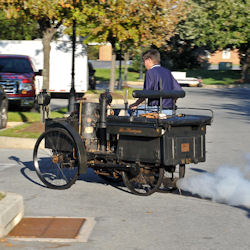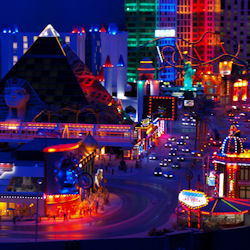
Hospitals can be, and often are, as unique as the towns and cities they are built in. Some are general hospitals. Some specialize in teaching or treating cancer. Whatever the case may be, it’s painfully obvious that some hospitals get more time and effort put into them than others. Here’s three interesting examples.
The image above is the atrium of the Henry Ford West Bloomfield Hospital, located in West Bloomfield, MI. Every detail inside and out was carefully planned to create a warm, welcoming and comforting environment. The hospital has a modern, mall-like feel to it. Points of interest include a demonstration kitchen, a “Live Well Shoppe”, and a wellness center and hair salon.
In addition to it’s modern approach to patient rehabilitation, the hospital is also super green. It uses natural light for heating and cooling. It also collects rainwater, and has an extensive recycling program. It’s crown jewel resides a short distance away: a hydroponics-based greenhouse that provides fresh fruits and vegetables for the hospital’s kitchens.

Let’s now shift from modern to medieval with St Bartholomew’s Hospital in Smithfield, London, UK. More affectionately known as St Bart’s, this historic hospital has been in constant use since 1123 and is the oldest still-open hospital in the world.
It has served, off and on, as a teaching hospital for centuries now. Important research on the human circulatory system and modern surgery were conducted here in the 18th century. The hospital had nearly 700 beds by the late 19th century.
That number has dwindled down to just under 400 beds in modern times. Talk of shutting the hospital portion of Bart’s was bandied about in the early 90’s, but it was decided to keep it operating for minor injuries. Major injuries and emergency cases are handled by larger, more modern hospitals nearby.

Speaking of larger, our third and final hospital is arguably the largest medical center in the world: Texas Medical Center in Houston, Texas. Yes, Texas… The Everything Must Be Huge State.
I’ll give ’em a pass on this one, though. Texas Med covers an estimated 1.5 square miles of real estate. The hospital consists of six main buildings: The Cullen, Jones, and Robertson Pavilions, the Children’s Hospital, the emergency center, and the Heart and Vascular Institute. That only covers about a quarter of the Center’s buildings, by the way.
The Center employs over a hundred thousand people in total. That includes 20,000 physicians, scientists and researchers. This enables the Center to treat over 7 million patients annually. Hospital or self-contained city? You decide.










